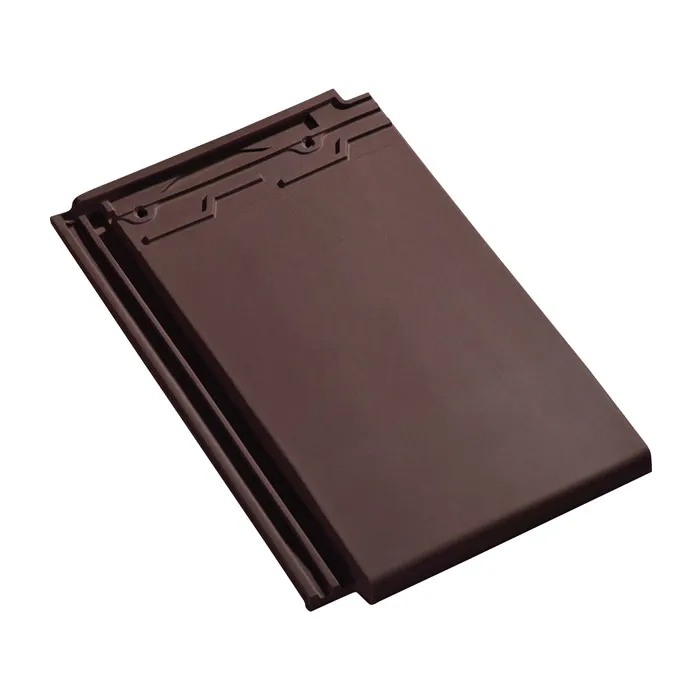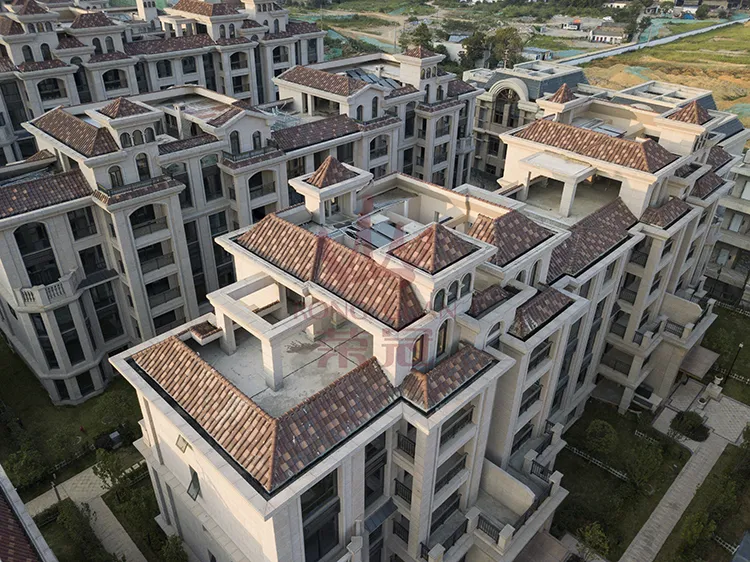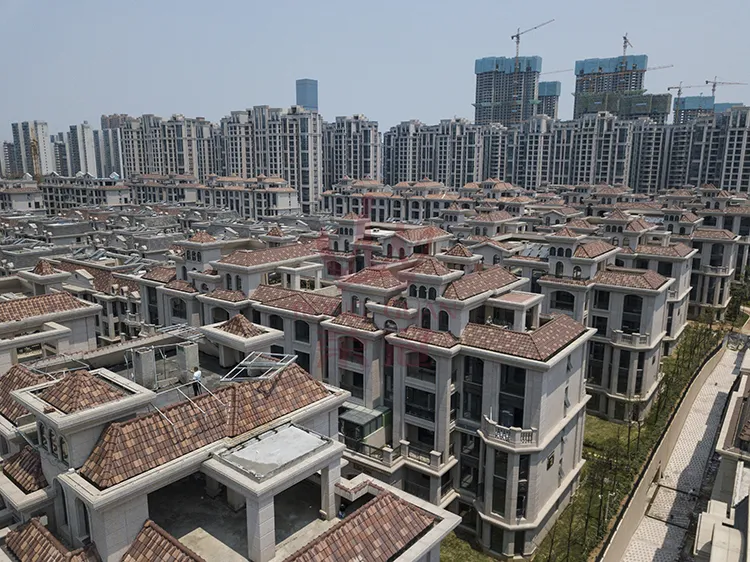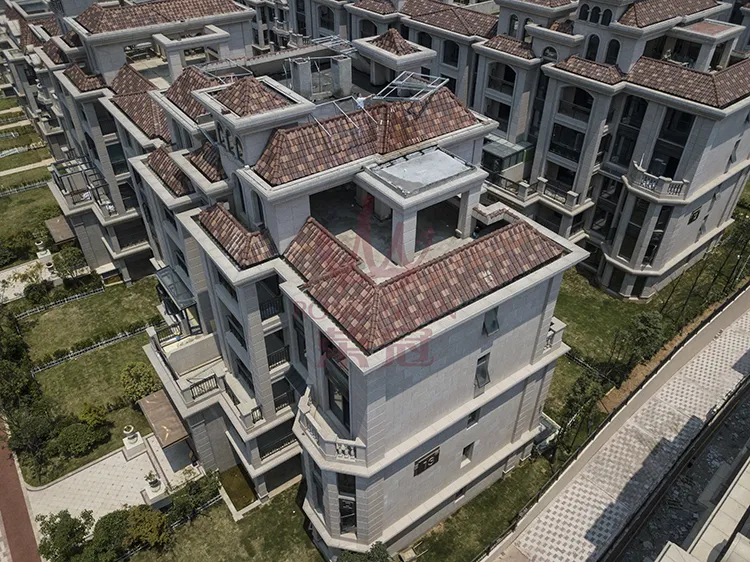The problem of roof leakage has always been one of the common problems in home maintenance. Especially in the rainy season, when heavy rain comes, many families will encounter the trouble of roof leakage. Clay roof tile is widely used because of its beauty, durability and good air permeability, especially in warm climates. However, despite the many advantages of clay roof tile, leakage problems may still occur under certain conditions, especially in heavy rain. Especially for flat clay roof tile, leakage problems are often more obvious and difficult to solve.
This article will explore why flat clay roof tiles leak during heavy rain, analyze possible reasons, and give professional advice to help homeowners find the root cause of leakage and take effective repair measures.

Basic structure of flat clay roof tile
Before we delve into the cause of leakage, we need to understand the structure and characteristics of flat clay roof tile. Flat clay roof tile is a clay tile made of clay, which is mainly used for covering the roof of buildings. Unlike traditional pitched roof clay tiles, flat clay roof tiles are usually installed on almost horizontal roofs with a small roof slope or almost no slope.
The main features of flat clay roof tiles include:
● Clay tile structure: Each clay tile is usually made of clay, glazed or other natural materials, and has high weather resistance. Clay tiles are generally thicker, with a smooth and dense surface.
● Installation method: Flat clay roof tiles are usually installed in an overlapping manner, relying on the overlap and tight joints between clay tiles to prevent water leakage.
● Smaller roof slope: Compared with traditional pitched roofs, flat clay roof tiles have a smaller slope, usually between 1 and 10 degrees, or even close to horizontal, which restricts the flow of water on the roof and makes it easy to accumulate water.

Reasons for flat clay roof tile leaks during heavy rain
Although clay roof tiles have high waterproof performance, flat clay roof tiles may still leak during heavy rain, especially in heavy rain or extreme weather conditions. The reasons for leakage are varied and are usually closely related to factors such as roof design, clay tile installation quality, weather conditions, and roof maintenance.
1. Insufficient roof slope
There is a potential problem in the design of flat clay roof tiles, that is, the roof slope is too small or close to horizontal. In this case, rainwater cannot flow quickly to the roof drainage system, but stays on the surface of clay tiles. The accumulation of water will increase the load on the roof and may penetrate into the joints of the roof, between clay tiles or other weak points.
● Water accumulation problem: If the roof slope is too small, it is difficult for rainwater to flow quickly, and the water will stay on the roof, especially in heavy rain, the amount of water increases sharply, causing water accumulation.
● Poor drainage: The accumulated water may penetrate into the room through the joints, edges or vents of the clay tiles, forming water seepage and causing water leakage.
2. Improper installation or damage of clay tiles
The installation quality of flat clay roof tiles is crucial to the waterproof performance of the roof. If the overlap between clay tiles is not tight during installation, the clay tiles are not completely fixed, or there are cracks in the clay tiles themselves, it may cause roof leaks.
● Misalignment or looseness of clay tiles: flat clay roof tiles need to be overlapped and close during installation to ensure that there are no gaps. If improperly installed, gaps appear between clay tiles, and water will penetrate to the bottom of the roof.
● Cracks or damage: If the clay tile has cracks or damage, especially due to long-term exposure to wind and rain, water may penetrate the roof through these cracks, causing leaks.
3. Faulty roof drainage system
The roof's drainage system, such as gutters, drain pipes and gutters, must match the roof design and slope. If the drainage system is not designed properly or there is a fault, water cannot be quickly discharged from the roof, causing water to accumulate on the roof and then penetrate into the roof structure.
● Drain pipe blockage: During heavy rain, the roof drain pipe is easily blocked by debris such as leaves, garbage, and soil. If the drain pipe is blocked, the water cannot be effectively discharged and the accumulated water will seep into the roof.
● Gutter defects: Gutters are an important part of collecting rainwater and directing it to the drain pipe. If the gutter is deformed, leaking or blocked, rainwater will not be able to flow smoothly to the drain pipe, eventually causing the roof to leak.
4. Climate factors and extreme weather
Extreme weather, especially strong winds and heavy rains, can also be an important factor in causing flat clay roof tile leaks. In heavy rain, the impact force and water flow of rainwater are greatly increased, and strong winds may even cause clay tiles to shift or fall off, further causing leaks.
● Strong winds: In the case of heavy rain accompanied by strong winds, the wind force can loosen or blow up clay tiles, causing clay tiles to shift. After the clay tiles shift, the original overlap and waterproofing effect will be affected, and water may penetrate into the roof structure.
● Extreme precipitation: In heavy rain, especially when the precipitation is too large, the roof's drainage system may not be able to carry excessive moisture, causing the roof to leak.
5. Roof aging and insufficient maintenance
Over time, roof clay tiles and other roof components may gradually age, resulting in a decrease in their waterproofing ability. Especially in the case of improper maintenance, the roof is prone to cracks, corrosion, weathering and other problems, which eventually lead to leaks.
● Clay tile aging: Although clay tiles are durable, when exposed to severe weather and ultraviolet rays, over time, tiny cracks or weathering may appear on the surface of the clay tiles, and water will penetrate through these cracks.
● Inadequate roof maintenance: Regular roof inspection and maintenance are essential to prevent leaks. If roof inspection is neglected, damaged clay tiles, water accumulation or drainage system failures may miss timely repairs, causing leaks.
6. Poor installation quality
Even if the design of the flat clay roof tile itself is not a big problem, if the construction quality is not up to standard, it is easy to cause leaks. Many leaks are caused by details during roof construction, such as clay tiles not being firmly fixed, loose joints, etc., which can cause water penetration.
● Loose joints: If the joints between the clay tiles on the roof are not handled properly, water may penetrate through these joints.
● Missing waterproof layer: Some roof structures require an additional waterproof layer to enhance waterproof performance. If this step is ignored, it is easy to cause leaks.

How to prevent flat clay roof tile leaks?
Preventing flat clay roof tile leaks requires effective preventive measures to ensure that the design, construction quality and daily maintenance of the roof meet standard requirements. Here are some measures to prevent water leaks:
1. Ensure the right slope
The slope of the flat clay roof tile should be as close to the design requirements as possible, avoiding the situation of being close to horizontal. The right slope can ensure that rainwater flows quickly to the drainage system and prevent water accumulation.
2. Check the roof regularly
Regularly check the installation of clay tiles, joints and functionality of the drainage system on the roof to ensure that there is no damage, displacement or blockage.
3. Repair and replace damaged clay tiles
If the clay tiles are found to be damaged or cracked, they should be replaced in time. Repairing cracks and damaged parts on the roof in time can prevent water from penetrating into the roof.
4. Clean the drainage system
Keep the roof drainage system unobstructed, and regularly clean the drain pipes, gutters and sinks to avoid water accumulation caused by blockage.
5. Consider the use of waterproof layer
For roofs that are severely aged or complex in structure, you can consider adding a waterproof layer to enhance the waterproof performance, especially in extreme weather conditions.

Rongguan has become a top brand in building materials, delivering an extensive range of quartz surfaces, terrazzo flooring, and clay roof tiles. Our state-of-the-art factory in South China guarantees both quality and competitive bulk pricing. Rongguan for your next purchasing project and enjoy our exclusive discounts!

